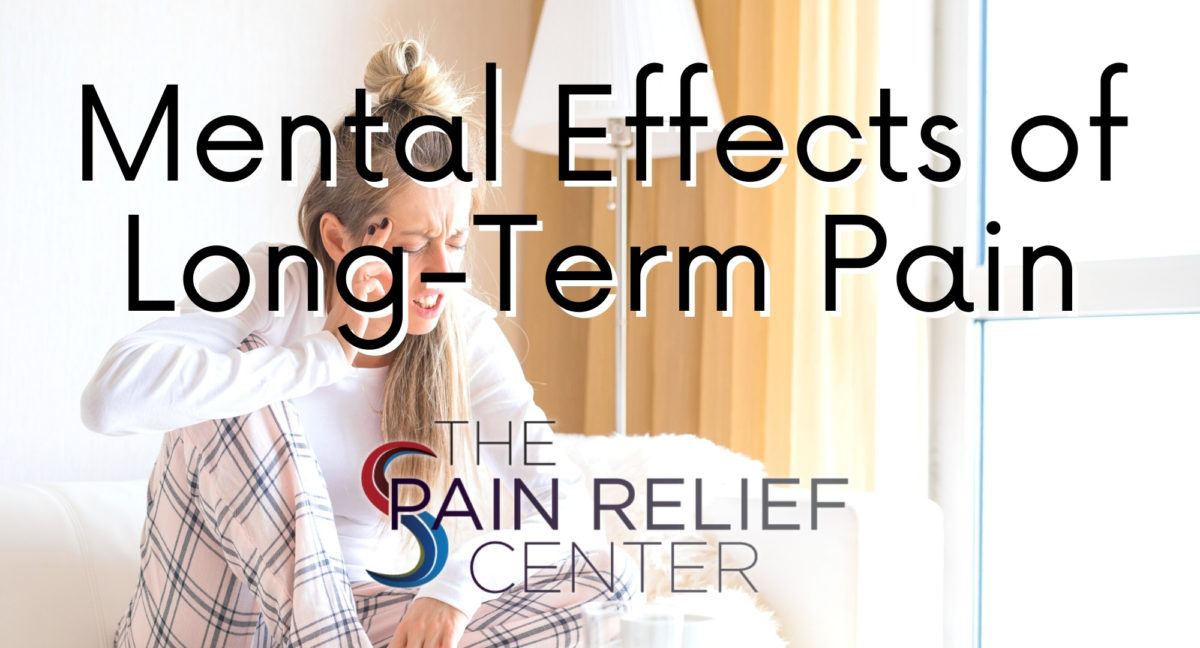Most people are aware of the superficial effects of chronic pain—including the pain itself. The focus is often on temporarily subduing the pain so that one may continue with some activities, at least long enough to get through a day. What is little known, though, are the serious mental effects that are associated with chronic pain. Untreated or under-treated long-term pain can cause changes to the brain that can affect some cognitive abilities and cause behavioral changes.
How Does Chronic Pain Change the Brain?
To put it simply, long-term pain changes the way that the brain works. Some researchers have found that in cases where chronic pain lasts more than a decade or multiple decades, the excessive brain activity that is associated with it can cause a decrease in gray matter. Gray matter is one of the two types of tissues that compose the brain. The constant firing of neurons and activity of the nerves creates excessive use that can cause them to die prematurely, leading to other issues. The constant nerve activity associated with long-term pain can also cause nerves involved in communication to rewire. This rewiring is often quite convoluted, and this complicated change can cause issues in the parts of the brain responsible for emotional reactions, leading to behavioral changes.
What Happens If Those Changes Occur?
The changes in the brain described above can lead to negative effects on lifestyle and behavior, including inability to sleep, anxiety and depression. The area of the brain that is responsible for sleep and wake cycles can atrophy from years of chronic pain. This atrophy is, again, a result of the wear and tear on the brain that is caused by the excessive use of the nerves that is associated with long-term pain. Changes to this area of the brain can not only cause problems with the ability to fall and stay asleep but also with one’s level of alertness.
Research has shown that patients who suffer from long-term pain have reduced activity in the area of the brain that controls pain responses. These patients can have an increased level of anticipatory focus on pain, which leads to an increased level of anxiety.Thirty to 60 percent of chronic pain patients also develop depression. The reduced pain control and increased level of complexity of brain wiring that can be caused by chronic pain can lead to increased emotional reaction to anticipated and future discomfort. Those who suffer with chronic pain are left with a sense of hopelessness when they are forced to wonder whether or not the pain will persist into the next day, week, month, etc. and thus develop depression related to their pain.
Stanford University School of Medicine’s Study
The Stanford University School of Medicine conducted a study on mice that experience chronic paw pain due either to inflammation or nerve damage. Throughout the study, they were prompted to complete increasing amounts of work (measured in “nose taps”) to receive food. When compared with the control group of mice who were not suffering from the chronic pain, the pain-suffering mice would eat just as much as the control group. However, when the mice with the paw pain had to do increasingly more amounts of work to receive their food, they were less likely to work for it.
This prompted the researches to examine the different areas of the brain, and their studies show that there occurs a set of changes in key parts of the brain that may explain how chronic pain has the capacity to stifle one’s motivation.The nucleus accumbens (brain structures involved in computing behavioral strategies that prompts the survival skills of seeking or avoiding certain things) can permanently change some connections to this structure and cause a downshift in the motivation that they cause. Therefore, over time, long-term pain can change the brain’s chemistry and stifle the motivation of those who suffer from the pain.
What Can One Do to Avoid or Reverse These Changes?
It is important for anyone suffering from chronic pain to consult with a physician who can best advise any lifestyle changes or medicinal solutions to chronic pain. Research presented at an annual meeting of the American Pain Society shows that those who do yoga (“yogis”) have more gray matter in multiple areas of the brain, including that region which is responsible for pain modulation. Gray matter contains copious cells, but it can be decreased by chronic pain. Its size has been shown to correlate with pain tolerance; so, when its size is reduced, individuals are more likely to experience memory impairment, emotional issues, and a decrease in cognitive function. Practicing yoga, however, has been shown to increase gray matter, thus effectively reversing the effects of long-term pain and potentially increasing the quality of life for chronic pain sufferers.
You don’t have to suffer for the rest of your life. Let the Dallas Pain Relief Center help you manage your chronic pain. Call us today to schedule an appointment.


